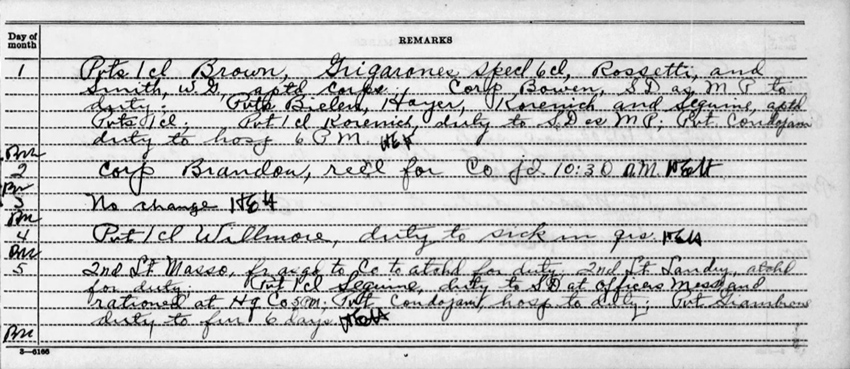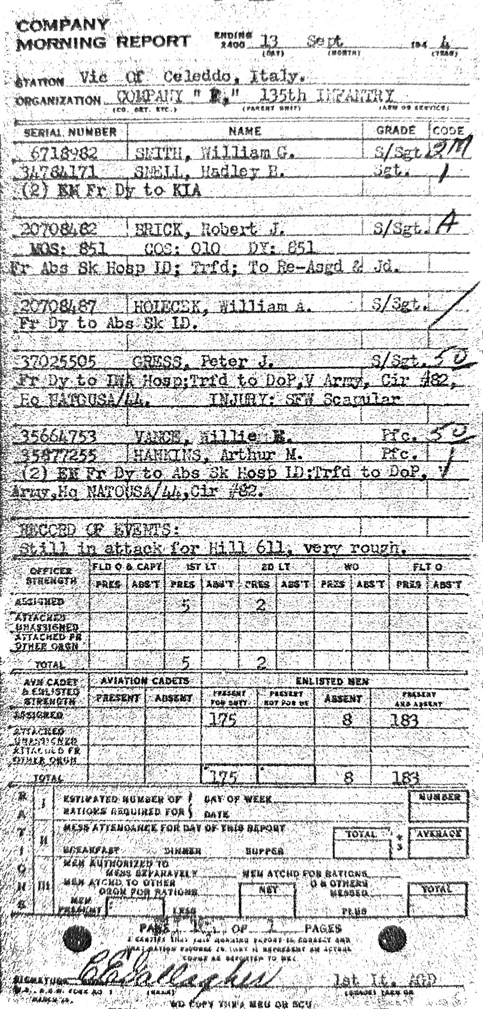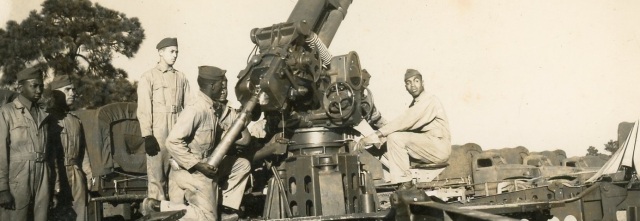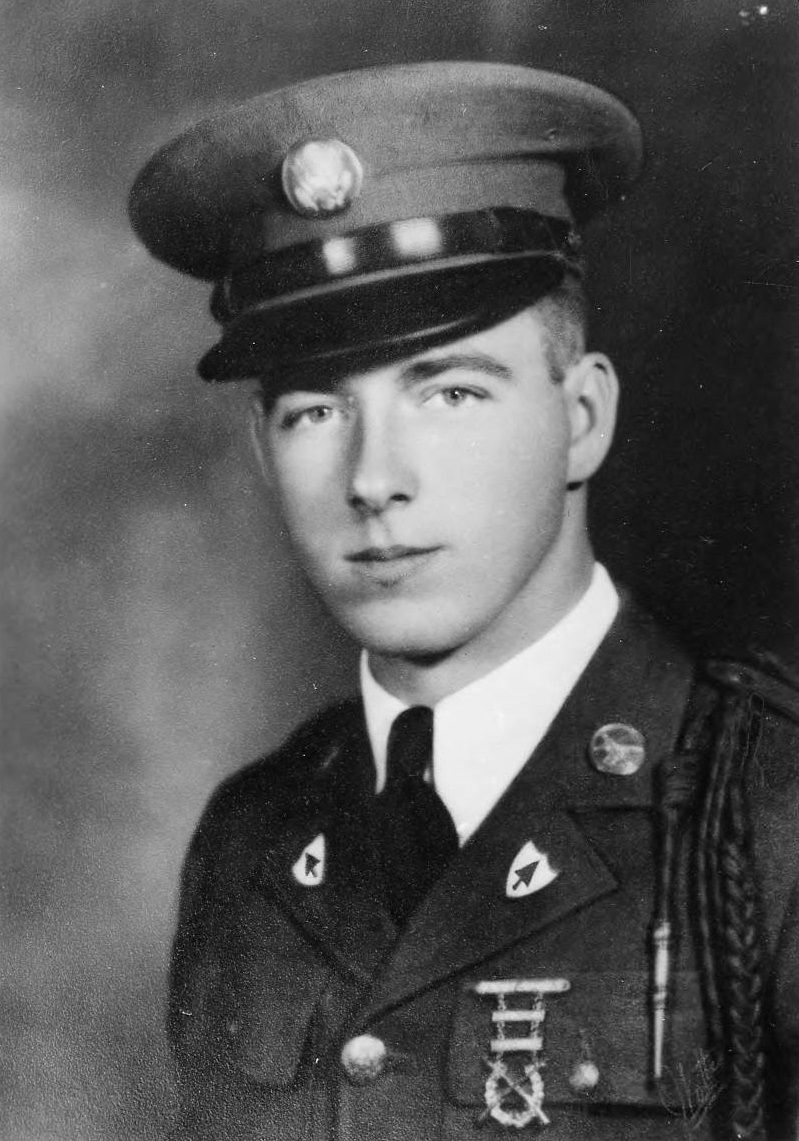
| Residences | Occupation |
| Maryland, Delaware | Career soldier |
| Branch | Service Number |
| U.S. Army | 6718982 |
| Theater | Unit |
| Mediterranean | Company “F,” 135th Infantry Regiment, 34th Infantry Division |
| Military Occupational Specialty | Campaigns/Battles |
| 653 (squad leader) | Tunisia, Naples-Foggia, Anzio, Rome-Arno, and North Apennines campaigns |
Early Life & Family
William George Smith was born on June 21, 1916, in Goldsboro, in Caroline County on Maryland’s Eastern Shore. He was the eldest son of Clarence Elijah Smith (1894–1983) and Gertrude Smith (née Lumb, later Scout, 1894–1989). The following year, Smith’s father was working as a farmer in Goldsboro when he registered for the draft on June 5, 1917.
Smith was recorded on the census in January 1920, living with his parents at 611 Adams Street in Wilmington, Delaware. His father was working in a shipyard. Smith’s younger brother, Ray Edwin Smith (1920–1987), was born in Greensboro, Caroline County, Maryland, on March 12, 1920, suggesting the Smiths had returned to Maryland by that point.
Smith’s parents were separated or divorced by the time of the next census, recorded in April 1930. Smith was living with his mother—by then working as a clerk for the state treasury—and brother on Market Street in Bridgeville, Delaware.
He was Protestant according to his military paperwork.
Prewar Military Career & Marriage
Smith’s mother told the State of Delaware Public Archives Commission that he enlisted in the U.S. Army on July 10, 1934, not long after his 18th birthday. She wrote that served in the regimental band of the 33rd Infantry at Fort Clayton, Panama, playing the saxophone.
33rd Infantry records from 1934 are incomplete but confirm that Smith was promoted to private 1st class by January 1935. Extant records indicate that Smith was in fact a member of Company “L,” 33rd Infantry, though he was attached to the regimental band prior to January 1, 1935. Among other duties, the bandsmen performed in ceremonies for dignitaries, the most notable being President Franklin D. Roosevelt when he visited the Panama Canal Zone. Smith was attached to the band until January 3, 1936. That same month he was reduced back to private.
Smith departed Company “L,” on August 14, 1936, to return to Brooklyn, New York, aboard the U.S.A.T. Chateau Thierry. His mother’s statement indicates that he was discharged from the U.S. Army on August 27, 1936.
Smith’s mother had just remarried to George Thompson Scout (1903–1973). Her statement indicates that after his discharge, Smith briefly moved to his mother and stepfather’s residence at 28 Commerce Street in Smyrna, Delaware.
Smith reenlisted in the U.S. Army on May 18, 1937, in Camden, New Jersey. Two days later, Private Smith joined Company “B,” 26th Infantry Regiment, 1st Division, stationed at Plattsburgh, New York. He was promoted to private 1st class on June 10, 1937. He was among a handful of enlisted men from the company who departed for detached service at Camp Perry, Ohio, on August 1, 1937. He returned to Plattsburgh Barracks on September 16, 1937. He subsequently went on detached service at Pine Camp, New York, from May 21, 1938, until June 4, 1938.
On October 30, 1939, Company “B” departed Plattsburgh Barracks by train, arriving that afternoon at the Army Base, Brooklyn, New York. On the morning of November 1, 1939, Company “B” boarded the U.S.A.T. Republic, sailing for Charleston, South Carolina, that afternoon. The transport arrived in Charleston on November 3, 1939. Early the following morning, Private 1st Class Smith and his comrades disembarked and boarded a train, arriving that afternoon at Fort Benning, Georgia, where they joined the 1st Division Camp.
Smith was promoted to corporal on December 1, 1939. He was recorded on the census on April 13, 1940, living at the Plattsburgh Barracks with other members of 1st Battalion, 26th Infantry Regiment. He was described as single and having completed one year of high school.
Smith reenlisted during maneuvers in Louisiana on May 18, 1940. His enlistment data card for that reenlistment appears garbled, listing his year of birth as 1900 rather than 1916. It also described him as divorced and having a grammar school education rather than one year of high school, both different than what was recorded on the census the month before.
Soon after returning to Plattsburgh on or about June 5, 1940, Smith married Rita Reeves (c. 1922–2008) on July 4, 1940. The couple had one daughter, Nancy Lee Smith (later Townsend, 1941–2009).
According to his mother’s statement, Smith moved to Fort Devens, Massachusetts, in February 1940. The date she provided is likely in error, since 1st Battalion moved to Fort Devens around February 27, 1941. His mother wrote that Smith was promoted to sergeant in December 1940, and participated in maneuvers in the Carolinas between July and December 1941. That suggests he may have transferred out of the 26th Infantry by then, since the unit was not involved in those maneuvers.
Early World War II Service & Tunisia
Following the attack on Pearl Harbor, the U.S. Army expanded drastically. Experienced Regular Army soldiers like Smith were assigned as cadre to new units, providing an experienced core of noncommissioned officers to help prepare large numbers of new soldiers for combat. Smith’s mother wrote that Smith moved to Camp Blanding, Florida, in February 1942 and then Fort George G. Meade, Maryland, on May 28, 1942. Similarly, Journal-Every Evening reported that Smith “was an instructor at Fort George Meade from 1941 to February, 1943, when he went overseas.”
It is unclear whether Smith’s wife and daughter accompanied him during his stateside duty assignments, but after he went overseas, they resided at 16 South Platt Street in Plattsburgh.
Smith’s mother wrote that her son was promoted to staff sergeant in April 1942 and was assigned to Company “B,” 417th Infantry Regiment, 76th Infantry Division. The unit was activated at Fort George G. Meade on June 15, 1942. She added that he was released from that assignment in late January 1943 and shipped out as a replacement from the New York Port of Embarkation.
Staff Sergeant Smith went overseas on March 5, 1943. On April 2, 1943, he was assigned to Company “F,” 135th Infantry Regiment, 34th Infantry Division, which was in the middle of the Tunisian campaign. He first saw combat during the Battle of Fondouk Gap, during April 7–10, 1943.

Later that month, beginning on April 27, 1943, the 135th Infantry and the rest of the 34th Infantry Division participated in the fighting on and around Hill 609, which fell on April 30 after heavy fighting. After the last two major Axis-held fell on May 7, 1943, all remaining German and Italian forces in Tunisia had no choice but to surrender. Although little-heralded today, the Tunisian campaign represented one of the greatest Allied victories up to that point, with over 200,000 enemy soldiers becoming prisoners of war.
Combat in Italy
After additional training in North Africa, the 135th Infantry embarked aboard British transports, with 2nd Battalion boarding H.M.T. Empire Trooper, on September 15, 1943. They arrived at the Gulf of Salerno, Italy, on September 21, 1943, just under two weeks into the invasion of mainland Italy. The 135th Infantry went into the line near the Volturno River on October 8, 1943, spending a few days reconnoitering and patrolling before engaging the enemy early on October 13. Fighting along the Volturno continued into November.

Italy’s geography proved ideal for German defensive warfare. Every time the Allies broke one defensive line, the enemy retreated in good order to the next already-prepared defensive line to the north. “Sunny Italy” proved extremely wet during the fall of 1943, and the men did not always have adequate raingear or their bedrolls. Rough terrain complicated the process of bringing in supplies, which often had to be brought in by mule. The November 1943 regiment history narrative stated that “It was impossible to secure socks until the end of the month and considerable foot trouble resulted” including 40 men needing to be evacuated due to cold weather injuries one 24-hour period. Staff Sergeant Smith was among the men hospitalized with trench foot that month.
Smith was not discharged from the hospital to return to his unit until March 1944. That same month, the 34th Infantry Division arrived at the Anzio beachhead, where an Allied amphibious operation to bypass the Gustav Line had bogged down. Until late May, the Anzio beachhead was static. Although neither side launched any major offensives, the beachhead was under regular bombardment by enemy aircraft and artillery, including the superheavy railroad guns referred to as “Anzio Annie” and the “Anzio Express.”
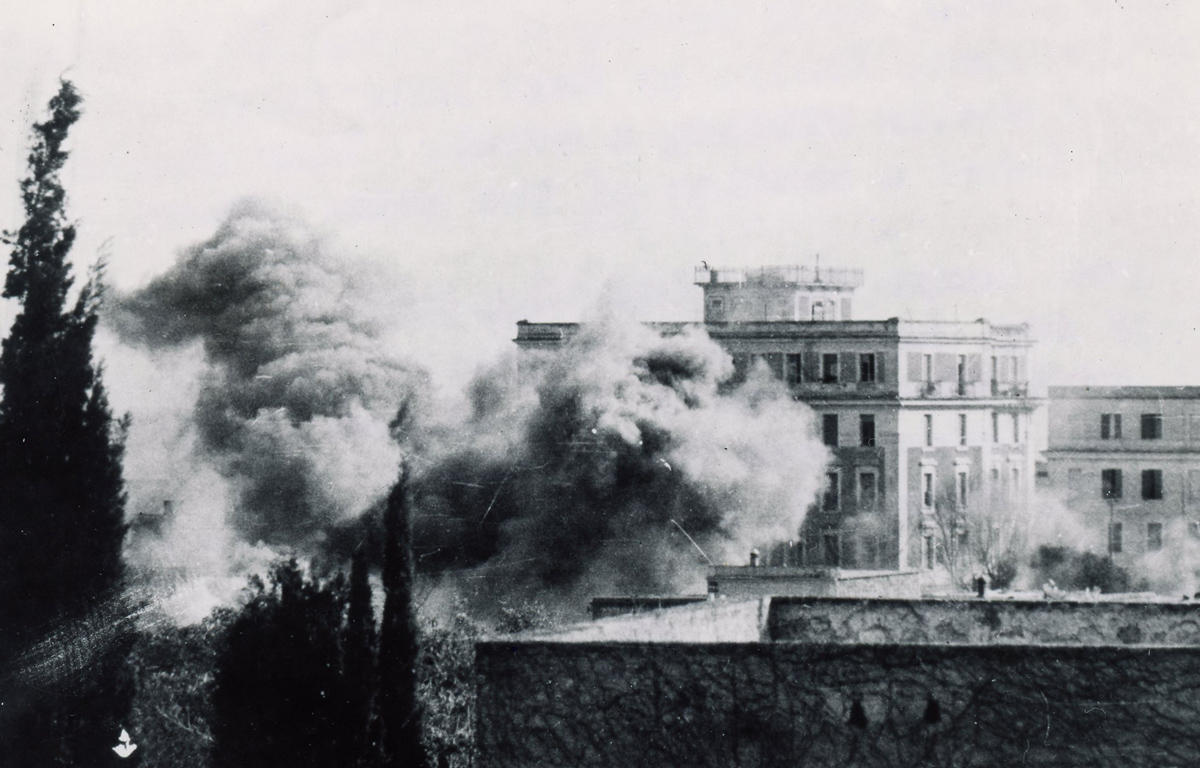
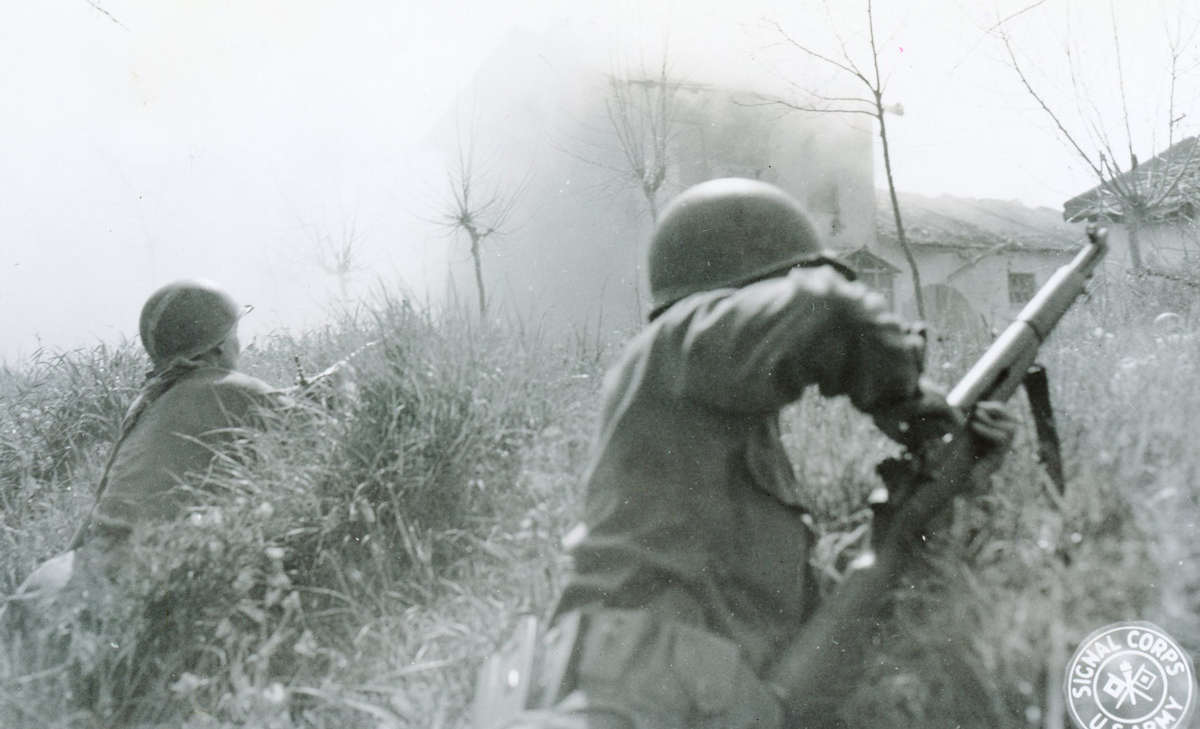
The long-awaited breakout from Anzio began on the morning of May 23, 1944, with a powerful artillery barrage. Finally, Rome was within the grasp of Allied forces. The 135th Infantry advance initially caught the Germans by surprise, and though resistance soon increased, the 34th Infantry Division made good progress. Around midday on May 25, 1944, the regiment repulsed a German counterattack aimed at the 34th Infantry Division’s left flank. The following day, the 34th and 45th Infantry Divisions continued their advance toward Campoleone. The regimental history stated that on May 27, 1944, “2nd Battalion was detached from the regiment and attached to CCA [Combat Command “A”], 1st Armored Division.
Per Field Order No. 12, the plan was for the 1st Armored Division to advance at 0630 hours on May 30, 1944, seizing an objective designated Phase Line Percy. Combat Command “A” would be on the division’s right during the advance. The orders designated Staff Sergeant Smith’s battalion as the vanguard of the attack, supported by two companies from the 1st Armored Regiment, with a battalion of armored infantry and two more tank companies following in a second wave. The advance initially went well, until enemy resistance was encountered near Phase Line Oscar, short of Phase Line Percy. A Combat Command “A” report stated: “At this point and for the rest of the day the infantry met heavy counterattacks, artillery and small arms fire from flank and rear.”
The following day, May 31, 1944, Staff Sergeant Smith’s battalion continued to push forward, advancing 200 yards at 1030 hours before enemy resistance again halted them. During the fighting that day, Staff Sergeant Smith was seriously wounded in action near Campoleone. He was treated at an unknown evacuation hospital and then transferred to the 52nd Station Hospital. There were two hospital admission cards—possibly because he was treated at two hospitals—under his service number for May 1944, though they presumably refer to the same injury. One stated he was wounded in the forehead and wrist by artillery fragments. Curiously, this card stated he returned to duty that same month. The second card stated that he was wounded by artillery shell fragments, which medical personnel debrided. This card correctly showed his discharge from the hospital as August 1944.
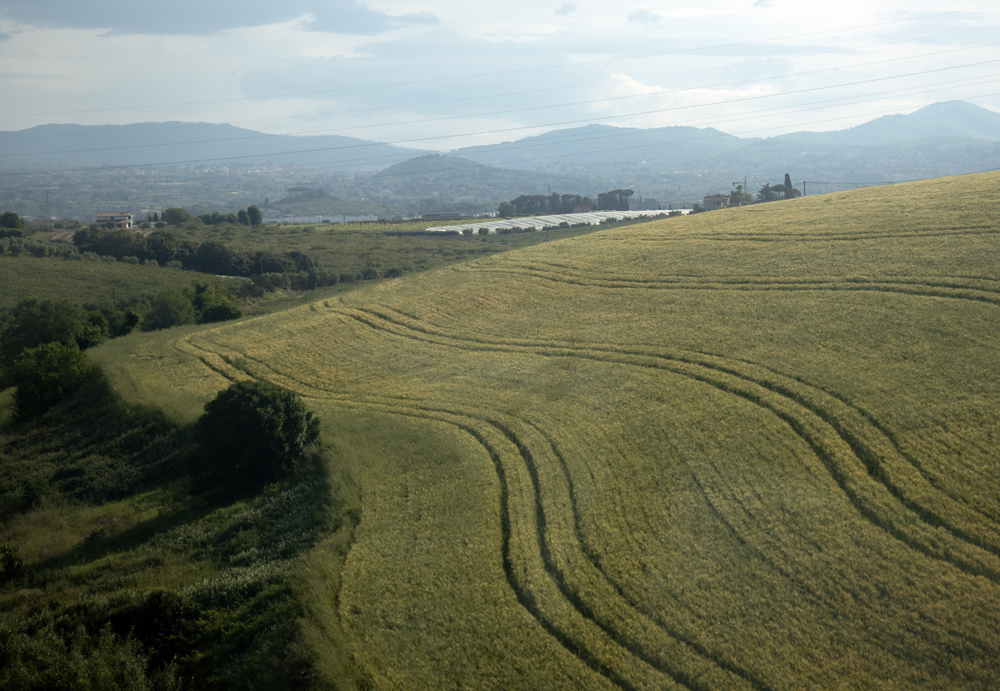
Due to the severity of his wounds, Staff Sergeant Smith was officially dropped from the rolls of Company “F” and transferred to the Detachment of Patients, 52nd Station Hospital, effective June 9, 1944. (That does not necessarily mean he arrived at the 52nd Station Hospital that date, since a man could be hospitalized but remain on the rolls of his previous organization until either a certain time passed or medical authorities ascertained that it would be a lengthy hospital stay.)
North Apennines Campaign
Three months after he was wounded, on August 31, 1944, Staff Sergeant Smith rejoined Company “F,” resuming his duty as squad leader. The 135th Infantry had spent the first three weeks of August out of the line, a well-deserved rest after spending nearly a year in combat in Italy. Beginning on August 22, the regiment had moved to the area of Castelfiorentino, Italy, “where a regular training schedule was instituted and continued throughout the remainder of the month.” The regiment continued training in early September before moving to the suburbs of Florence on September 8.
The 34th Infantry Division would be going up against the Gothic Line, another tough German defensive line through the Apennine Mountains. The 135th Infantry Regiment returned to combat on the morning of September 12, 1944. The plan was for 2nd Battalion to pass through lines held by another of the 34th Infantry Division’s regiments, the 168th Infantry. Then, Companies “E” and “F” of the 135th Infantry would attack, with Company “G” remaining in reserve.
The regimental journal recorded at 0700 that “Leading elements of 2nd Bn […] have met guides from 168th Inf” and that at 0930 “Elements of 3rd Bn just passed thru the forward elements of the 168th Inf.”
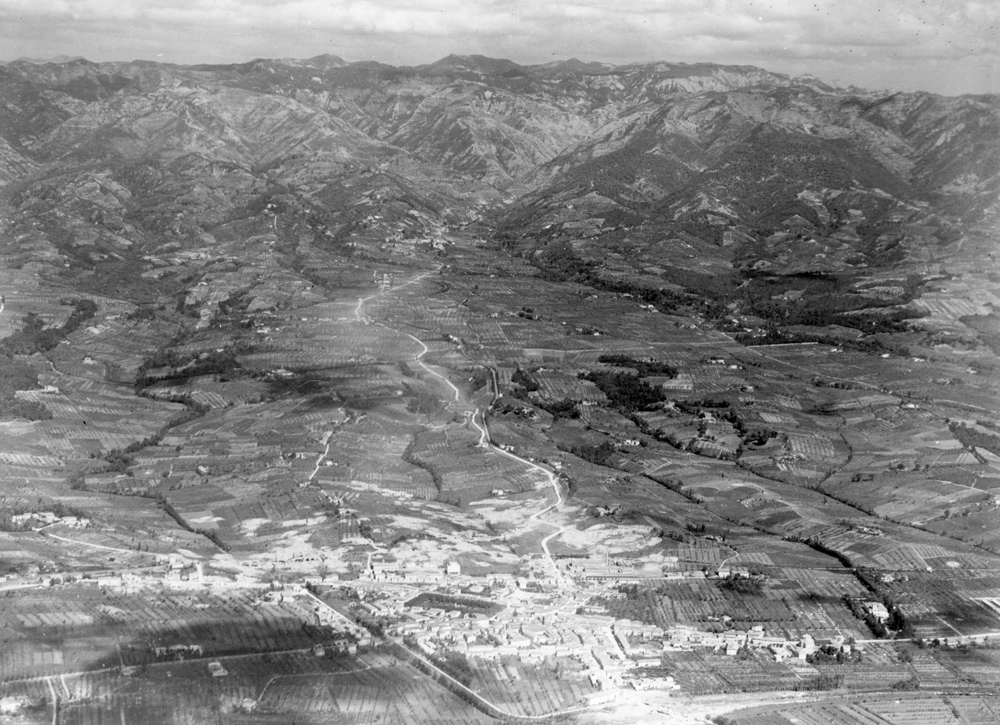
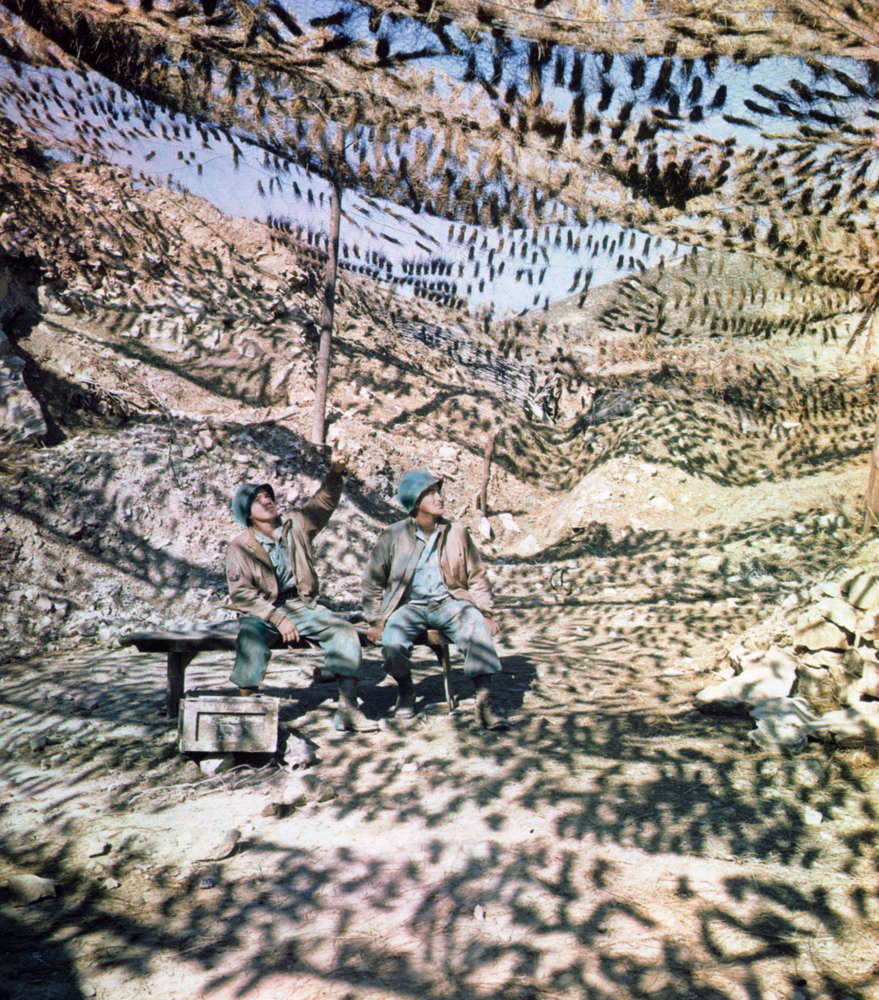
The journal reported at 0220 hours on September 13, 1944, that Company “F” had captured a German soldier
who walked into their company. PW [prisoner of war] says he got lost looking for rations. PW also claims he was a part of a Company of 50 EM [enlisted men] and 2 Lts. stationed as outer defense of Hill 611. PW reveals that [there] are four Companies on Hill 611. That the valley West of this hill is heavily mined. PW comes from the 1st Co., 1st Bn, 10 Regt. 4 Paratroop Div.
German paratroopers had a reputation as fierce fighters, and the 4th Parachute Division had bitterly resisted Allied advances since Anzio.

The plan for September 13, 1944, was for Companies “F” and “G” to continue the advance under cover of darkness, beginning at 0340 hours. The daily record of events for the company that day stated simply: “Still in attack for Hill 611, very rough.”
The regimental journal provided more detailed glimpses into a day that started smoothly, but quickly turned chaotic. The journal recorded at 0415 hours that 2nd Battalion was advancing, “meeting no resistance.” The Company “F” position was reported as [wQ]770980, approximately 44° 2’ 12” North, 11° 12’ 57” East. A patrol from the battalion “had gone to base of Hill 611, no resistance.”
By 0730 hours, Company “F” was reported at 768989, 44° 2’ 41” North, 11° 12’ 46” East, while Company “G” was under enemy machine gun fire. At 0915, 2nd Battalion was advised “that arrangements are being made for TOT [time on target] shoot to left front of 2nd Bn and requested information as to possible enemy targets.” A British innovation, time on target aimed to saturate the target area with multiple artillery shells in a matter of seconds, catching enemy soldiers before they could take cover. The journal stated that “satisfactory results” were reported.
In addition to the artillery barrage, at 0930 hours, the 2nd Battalion operations officer sought to soften up enemy resistance by requesting armor support “to do some point target shooting.” At 1145, he reported the battalion was under machine gun fire and was in the process of trying to direct artillery at the enemy positions. An entry at 1825 reported that 2nd Battalion “withdrew this afternoon due to heavy concentration of enemy MG [machine gun] and mortar fire.” Then, “From 1830 to 1900 3 mortar barrages in draw between E & F Cos, approximately 48 rounds total[.]” 2nd Battalion continued to fight that night, before being relieved the next morning by 1st Battalion.
A Company “F” morning report stated that Staff Sergeant Smith and Sergeant Hadley B. Snell (1925–1944) were killed in action that day, September 13, 1944.
According to Staff Sergeant Smith’s burial report, he suffered multiple penetrating wounds to his neck and chest. Although the source of the wounds was not described in the report, records of the day’s events suggest enemy mortar fire as the most likely cause. He was initially buried on September 18, 1944, at a temporary military cemetery at Castelfiorentino.
Journal-Every Evening reported that Staff Sergeant Smith’s wife was informed of his death on October 5, 1944. The paper also reported that on the same day Smith’s mother learned that he had been killed, she also learned that Smith’s brother, Marine Private 1st Class Ray E. Smith, had a close call on Peleliu when he and “seven companions was riding in an amphibious tank and narrowly escaped death when the tank was hit by Japanese fire.”
Staff Sergeant Smith’s personal effects included an identification bracelet (a private purchase commonly worn by soldiers in addition to their government issued dog tags), a broken wristwatch, a fountain pen, eyeglasses, a Bible, two rings, a folder of photos, a cross, a Combat Infantryman Badge, campaign ribbons, and two overseas stripes. On December 14, 1944, Captain F. A. Eckhardt from the Army Effects Bureau wrote to Smith’s widow to ask if she wanted her husband’s bloodstained Bible forwarded with the rest of his belongings. She wrote back that she did.
After the war, in 1947, Staff Sergeant Smith’s widow requested that his body be repatriated to the United States and turned over to Smith’s mother for burial. The following fall, Staff Sergeant Smith’s body returned from Livorno, Italy, to the New York Port of Embarkation aboard the Lawrence Victory. On November 26, 1948, Smith’s mother met the casket and a military escort at the train station in Clayton, Delaware. Smith was buried at Odd Fellows Cemetery in Smyrna, Delaware. His mother and stepfather were also buried there after their deaths. Smith is honored at Veterans Memorial Park in New Castle, Delaware.
Notes
Specialist
On November 29, 1939, Private 1st Class Smith was rated as a specialist 4th class. Between 1920–1942, men at the grade of private 1st class who had special skills could be appointed to a specialist rating entitling them to extra pay. It should not be confused with the specialist grades shortly after the Korean War. This rating is a footnote in his long career given that he was promoted to corporal on December 1, 1939, rending the specialist rating moot, since it only applied to the grade of private 1st class.
Acknowledgments
Special thanks to the Delaware Public Archives for the use of their photo and to Matt LeMasters for providing a roster that provided useful information about the beginning of Smith’s overseas service.
Bibliography
Application for Headstone or Marker for William G. Smith. November 30, 1948. Applications for Headstones, January 1, 1925 – June 30, 1970. Record Group 92, Records of the Office of the Quartermaster General, 1774–1985. National Archives at St. Louis, Missouri. https://www.ancestry.com/imageviewer/collections/2375/images/40050_644066_0015-00303
Clay, Steven E. U.S. Army Order of Battle 1919–1941, Volume 1. The Arms: Major Commands and Infantry Organizations, 1919–41. Combat Studies Institute Press, 2010. https://cgsc.contentdm.oclc.org/digital/collection/p16040coll3/id/198/rec/3
Draft Registration Card for Edwin Ray Smith. January 29, 1946. WWII Draft Registration Cards for Delaware, October 16, 1940 – March 31, 1947. Record Group 147, Records of the Selective Service System. National Archives at St. Louis, Missouri. https://www.ancestry.com/imageviewer/collections/2238/images/44003_03_00003-01841
Fifteenth Census of the United States, 1930. Record Group 29, Records of the Bureau of the Census. National Archives at Washington, D.C. https://www.ancestry.com/imageviewer/collections/6224/images/4531895_00123
Fourteenth Census of the United States, 1920. Record Group 29, Records of the Bureau of the Census. National Archives at Washington, D.C. https://www.ancestry.com/imageviewer/collections/6061/images/4295769-00894
“History of the 135th Infantry Regiment From: 17 September 1943 To: 31 October 1943.” World War II Operations Reports, 1940–48. Record Group 407, Records of the Adjutant General’s Office. National Archives at College Park, Maryland.
Individual Deceased Personnel File for William G. Smith. Individual Deceased Personnel Files, 1939–1953. Record Group 92, Records of the Office of the Quartermaster General, 1774–1985. National Archives at St. Louis, Missouri. Courtesy of U.S. Army Human Resources Command.
“Journal & File Combat Command ‘A’.” May 26, 1944 – June 1, 1944. World War II Operations Reports, 1940–48. Record Group 407, Records of the Adjutant General’s Office. National Archives at College Park, Maryland.
Morning reports for Band 33rd Infantry Regiment. February 1935 – January 1936. U.S. Army Morning Reports, c. 1912–1946. Record Group 64, Records of the National Archives and Records Administration. National Archives at St. Louis, Missouri. https://www.fold3.com/image/707119143, https://www.fold3.com/image/707119596
Morning reports for Company “B,” 26th Infantry Regiment. May 1937 – December 1939. U.S. Army Morning Reports, c. 1912–1946. Record Group 64, Records of the National Archives and Records Administration. National Archives at St. Louis, Missouri. https://www.fold3.com/image/706954229, https://www.fold3.com/image/706954274, https://www.fold3.com/image/706954405, https://www.fold3.com/image/706956309, https://www.fold3.com/image/706956359, https://www.fold3.com/image/706956363, https://www.fold3.com/image/706956375
Morning reports for Company “F,” 135th Infantry Regiment. June 1944 – September 1944. U.S. Army Morning Reports, c. 1912–1946. Record Group 64, Records of the National Archives and Records Administration. National Archives at St. Louis, Missouri.
“Nancy L Smith Townsend.” Find a Grave. https://www.findagrave.com/memorial/116283725/nancy-l-townsend
“Narrative History for the Month of August.” 135th Infantry Regiment. World War II Operations Reports, 1940–48. Record Group 407, Records of the Adjutant General’s Office. National Archives at College Park, Maryland.
“Narrative History for the Month of May 1944.” 135th Infantry Regiment. World War II Operations Reports, 1940–48. Record Group 407, Records of the Adjutant General’s Office. National Archives at College Park, Maryland.
“Narrative History for the Month of September.” 135th Infantry Regiment. World War II Operations Reports, 1940–48. Record Group 407, Records of the Adjutant General’s Office. National Archives at College Park, Maryland.
“Narrative History North African—Tunisian Campaign—1943 (18 October 1942 – 15 May 1943). Headquarters 135th Infantry Regiment. World War II Operations Reports, 1940–48. Record Group 407, Records of the Adjutant General’s Office. National Archives at College Park, Maryland.
“Narrative History of the 135th Infantry Regiment. (1 November 1943 to 30 November 1943).” World War II Operations Reports, 1940–48. Record Group 407, Records of the Adjutant General’s Office. National Archives at College Park, Maryland.
“Pay Roll of Company ‘F’, 135th Infantry. For month of April 1943.” April 30, 1943. U.S. Army Muster Rolls and Rosters, November 1, 1912 – December 31, 1943. Record Group 64, Records of the National Archives and Records Administration. National Archives at St. Louis, Missouri.
Scout, Gertrude. Individual Military Service Record for William George Smith, c. May 22, 1945. Record Group 1325-003-053, Record of Delawareans Who Died in World War II. Delaware Public Archives, Dover, Delaware. https://cdm16397.contentdm.oclc.org/digital/collection/p15323coll6/id/20908/rec/25
Sixteenth Census of the United States, 1940. Record Group 29, Records of the Bureau of the Census. National Archives at Washington, D.C. https://www.ancestry.com/imageviewer/collections/2442/images/m-t0627-02517-00474
“Soldier Killed on Same Day Brother Escapes Jap Fire.” Journal-Every Evening, October 9, 1944. https://www.newspapers.com/article/137760418/
“S/Sgt. William George Smith.” Find a Grave. https://www.findagrave.com/memorial/54081329/william-george-smith
“Townsend, Nancy L.” The Pasco Tribune, March 18, 2009. https://www.newspapers.com/article/137814312/
U.S. WWII Hospital Admission Card Files, 1942–1954. Record Group 112, Records of the Office of the Surgeon General (Army), 1775–1994. National Archives at College Park, Maryland. https://www.fold3.com/record/703967995/blank-us-wwii-hospital-admission-card-files-1942-1954, https://www.fold3.com/record/703967993/blank-us-wwii-hospital-admission-card-files-1942-1954, https://www.fold3.com/record/703967994/blank-us-wwii-hospital-admission-card-files-1942-1954, https://www.fold3.com/record/703967992/blank-us-wwii-hospital-admission-card-files-1942-1954
World War I Selective Service System Draft Registration Cards, 1917–1918. National Archives at Washington, D.C. https://www.ancestry.com/imageviewer/collections/6482/images/005152007_04743
World War II Army Enlistment Records. Record Group 64, Records of the National Archives and Records Administration. National Archives at College Park, Maryland. https://aad.archives.gov/aad/record-detail.jsp?dt=893&mtch=1&cat=all&tf=F&q=06718982&bc=&rpp=10&pg=1&rid=230396
Last updated on May 26, 2024
More stories of World War II fallen:
To have new profiles of fallen soldiers delivered to your inbox, please subscribe below.

